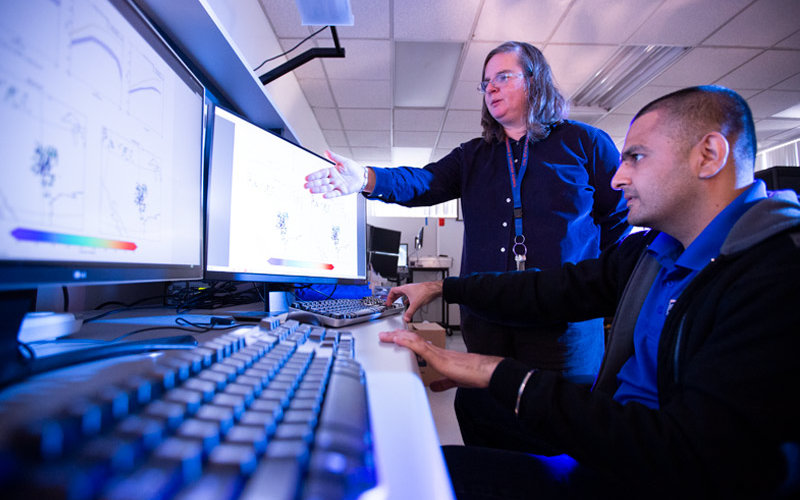
For generations, farmers observed weather and soil conditions and used their own experiences to predict crop cultivation. But today, farmers can get support by using new, innovative technologies.
Through his thesis project, computer science graduate student Raxitkumar Solanki hopes to help farmers forecast crop yields by delving into the field of artificial intelligence, known as AI, and creating algorithms — steps a computer takes to solve a problem — to predict wheat crop production by using past weather and soil data.
“Our proposed model can aid farmers by providing knowledge that can augment traditional knowledge, such as information about past climate and pests,” said Solanki, who is working on the project with research adviser Doina Bein, assistant professor of computer science. “By using past data, we can predict the best models for wheat prediction in the future and help farmers predict the unavoidable risks and losses in farming.”
Artificial intelligence is a term used to describe algorithms that make use of existing data — known as historical data — that mimic the human brain to accomplish certain tasks. John McCarthy, one of the creators of AI, defined it as “the science and engineering of making intelligent machines,” Bein noted.
The computer scientists apply machine learning techniques, a subset of AI, in which algorithms prioritize data to perform a specific task or action, Bein explained.
“For example, when playing chess, the computer will suggest what chess moves to make based on previous strategies learned by the computer before the actual game starts,” she said.
Under the guidance of Bein, Solanki and 2018 graduate Neha Rale (M.S. computer science), created a software model to predict crop yield production. The students’ research is reflected in a new paper with Bein, in collaboration with colleagues from the University of Nevada, Las Vegas. The paper on “Prediction of Crop Cultivation” has been accepted for publication this spring as part of the conference proceedings of the recent 2019 IEEE Computer and Communications Workshop and Conference in Las Vegas. At the conference, Bein presented the paper and received the “Best Presenter Award.”
Artificial intelligence will permeate our everyday life, helping us make better decisions. — Doina Bein
The theory of AI started in 1960, but only recent advances in hardware and software made it possible to be ubiquitous, added Solanki, who is set to graduate in May and plans to pursue a career in AI as a data scientist.
“I personally believe that AI is a revolutionary industry. Many unsolved problems can be solved through the help of AI,” he said.
With AI revolutionizing society, there is an increasing demand for AI professionals, noted Anand Panangadan, assistant professor of computer science, who also is guiding students on AI and internet of things (IoT)-related transportation projects. AI and IoT are interconnected, with the IoT acting as the “eyes and hands” of artificially intelligent systems, he noted.
“IoT systems provide data from our environment that can then be used by AI applications. For instance, sensors placed in a refrigerator can tell what foods are available; an AI application can then come up with a shopping list based on the family’s eating habits,” Panangadan said.
The College of Engineering and Computer Science is preparing students for the AI and IoT workforce by offering new courses and the opportunity to work on a range of faculty-led projects. Courses are offered covering such areas as artificial intelligence, algorithm engineering, data science and big data, machine learning, cloud computing and high performance computing.
“AI will permeate our everyday life, helping us make better decisions,” Bein said. “My only concern is by increasingly relying on machines to make decisions and becoming dependent on the machines, it exposes society to privacy risks and job insecurity since human jobs could be replaced by machines.”